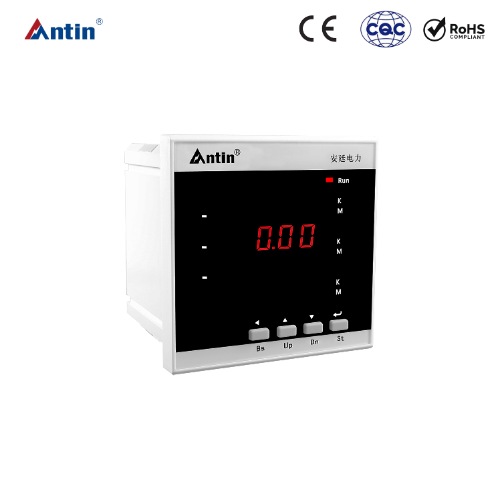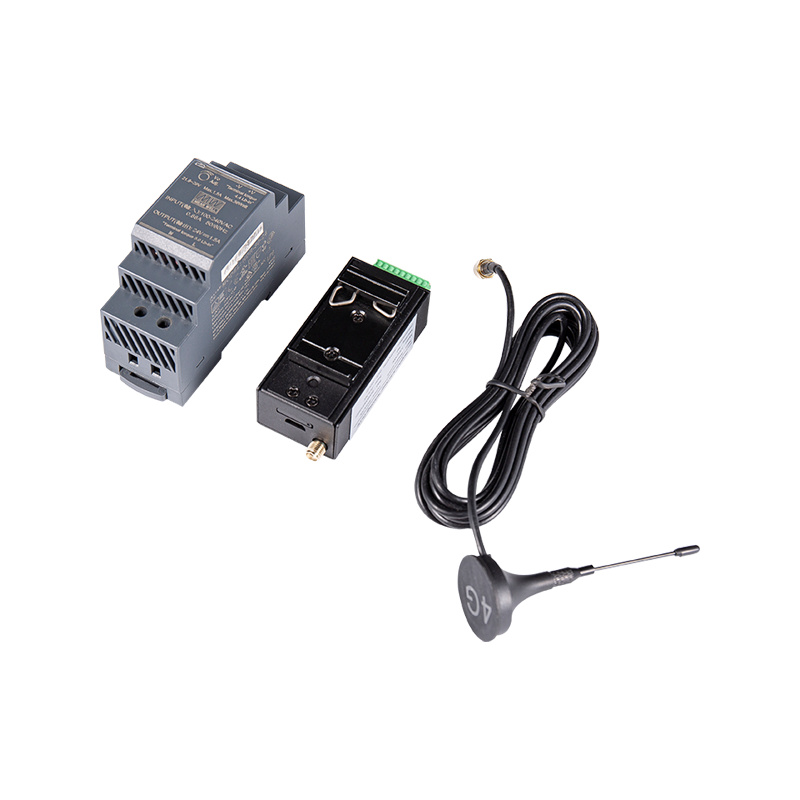The Ultimate Guide to Temperature and Humidity Controllers
Understanding the Fundamentals of Climate Control
In the realm of environmental management, the precise regulation of atmospheric conditions is paramount. A Temperature and Humidity Controller stands as the central nervous system for a vast array of applications, from safeguarding musical instruments to ensuring optimal conditions in a scientific incubator. These sophisticated devices do more than just read values; they actively process data from connected sensors and output signals to HVAC equipment, humidifiers, or dehumidifiers to maintain a user-defined setpoint. The core principle is feedback loop control: constantly measuring the environment, comparing it to the desired state, and making calculated adjustments to eliminate any variance. This process ensures stability, which is often more critical than the absolute values themselves. For anyone invested in preserving materials, cultivating growth, or maintaining industrial processes, grasping the functionality of these controllers is the first step toward achieving unparalleled environmental precision and reliability.
How Modern Controllers Differ from Basic Thermostats
While often grouped together, a standard thermostat and a dedicated humidity controller serve distinct purposes with varying levels of sophistication. A basic thermostat is primarily designed for on/off control of a heating or cooling system based on temperature alone. Its functionality is linear and its focus singular. In contrast, a comprehensive Temperature And Humidity Controller is a multifaceted instrument capable of managing complex interactions between two interrelated variables. The following comparison highlights the key distinctions:
Firstly, a thermostat typically controls a single output, such as a furnace. A humidity controller, however, often manages multiple outputs simultaneously; for instance, it might activate a dehumidifier when humidity is high but temperature is low, a scenario where a simple air conditioner would not be triggered. Secondly, advanced controllers employ Proportional-Integral-Derivative (PID) algorithms, which allow for smooth, gradual adjustments to equipment, preventing short cycling and improving efficiency. Basic thermostats usually operate on a simple hysteretic control, leading to more significant swings around the setpoint. Lastly, modern controllers offer extensive connectivity and data logging features, enabling users to track environmental trends over time, a function almost entirely absent in standard thermostats.
| Feature | Basic Thermostat | Advanced Temperature/Humidity Controller |
|---|---|---|
| Controlled Variables | Temperature only | Temperature and Humidity simultaneously |
| Control Algorithm | On/Off (Hysteretic) | PID for precise, stable control |
| Number of Outputs | Typically 1 or 2 (Heat/Cool) | Multiple (e.g., Heat, Cool, Humidify, Dehumidify) |
| Data Logging | Rarely available | Common, with historical trend analysis |
| Application Complexity | Residential comfort | Industrial, commercial, scientific, agricultural |
Selecting the Best Controller for Your Specific Needs
Choosing the right controller is a critical decision that hinges on understanding the specific requirements of your environment. A one-size-fits-all approach does not apply, as the needs of a wine cellar are vastly different from those of a pharmaceutical cleanroom. The selection process involves a careful evaluation of several technical and practical factors to ensure the device you choose can deliver the performance and reliability your application demands. Overlooking key specifications can lead to inadequate control, equipment damage, or wasted energy.
Key Specifications to Scrutinize Before Purchase
Before investing in a controller, a thorough review of its specifications is non-negotiable. These specs define the capabilities and limitations of the unit.
Input Sensor Type and Accuracy
The type of sensor the controller uses is the foundation of its accuracy. For temperature, common sensors include thermocouples, RTDs (Resistance Temperature Detectors), and thermistors. RTDs generally offer higher accuracy and stability over time compared to thermocouples. For humidity, capacitive polymer sensors are most common. The accuracy should be clearly stated, for example, ±0.5°C for temperature and ±2% RH for humidity. A high-accuracy sensor is worthless if the controller's internal processing is poor, so look for the overall system accuracy.
Output Type and Capacity
Outputs are how the controller communicates with the outside world. They can be relay outputs (mechanical or solid-state switches), analog voltage (0-10V), or analog current (4-20mA). The choice depends on your equipment. A relay output is simple and can switch a high-power load like a heater directly, but it is subject to wear. Analog outputs provide variable control for devices like inverters on compressor motors. Crucially, you must ensure the output's voltage and current ratings match or exceed the requirements of the connected load to avoid failure.
Control Algorithm (ON/OFF vs. PID)
The control algorithm determines how the controller reacts to a deviation from the setpoint. Simple ON/OFF control is adequate for applications where precise stability isn't critical, but it causes the equipment to cycle on and off frequently, leading to wear and energy inefficiency. PID control is far superior for precise environments. It calculates the proportional, integral, and derivative values of the error signal to determine not just if an output should be on, but for how long and at what intensity. This results in minimal deviation from the setpoint and much smoother operation of attached equipment, which is essential for sensitive applications like humidity control for guitar storage.
Diverse Applications of Precision Environmental Control
The utility of temperature and humidity controllers extends far beyond simple comfort. They are indispensable tools in a multitude of sectors where environmental stability directly impacts quality, safety, yield, and preservation. In each application, the controller acts as a guardian, tirelessly working to counteract external influences and internal processes that threaten to disrupt a delicate balance. From the food we eat to the medicines we rely on, these devices play a silent yet crucial role in modern infrastructure.
Optimizing Conditions for Musical Instrument Preservation
For musicians, collectors, and museums, preserving the integrity of wooden instruments like guitars, violins, and pianos is a top priority. Wood is a hygroscopic material, meaning it absorbs and releases moisture from the air. Fluctuations in relative humidity cause wood to expand and contract, leading to a host of problems including cracks, warping, glue joint failures, and compromised sound quality. A stable environment is not a luxury; it is a necessity. This is where a dedicated controller becomes invaluable. By maintaining a consistent 45-55% relative humidity level, the controller prevents the damaging effects of seasonal changes and dry indoor heating air. For a valuable vintage guitar, this precise humidity control for guitar storage can mean the difference between a pristine instrument and a cracked, unplayable relic. The controller does this by commanding a humidifier to add moisture when the air is too dry or a dehumidifier to remove it when the air is too damp, all based on continuous readings from a highly accurate sensor.
Creating the Perfect Environment for Reptile Habitats
Reptile keeping, or herpetoculture, requires the careful replication of specific microclimates to ensure animal health and well-being. Different species have evolved to thrive in particular ranges of temperature and humidity, and replicating these conditions in an enclosure is fundamental to successful care. Incorrect humidity can lead to fatal respiratory infections or problematic shedding (dysecdysis). This is why many serious hobbyists invest in a reptile enclosure humidity controller. This device automates the tedious task of manually misting an enclosure and guessing at temperatures. A probe placed inside the terrarium feeds data to the controller, which can then activate heat lamps, ceramic heat emitters, foggers, or misting systems. For a tropical species like a Crested Gecko, which requires high humidity (70-80%), the controller can trigger a fogger for several minutes at intervals throughout the day to maintain a naturalistic and healthy environment, something impossible to achieve manually with consistency.

Advanced Features and Smart Technology Integration
The evolution of temperature and humidity controllers has moved beyond simple dials and analog displays. The latest generation of devices embraces digital technology, connectivity, and advanced algorithms to offer unprecedented levels of control, convenience, and insight. These features transform the controller from a reactive device into a proactive management system, providing users with data and remote capabilities that were once available only in high-end industrial systems.
The Convenience of Wireless and App-Based Management
Modern problems require modern solutions, and the need for remote monitoring is a prime example. WiFi humidity controller app compatibility has become a highly sought-after feature. This technology allows users to connect their controller to a home or facility network, enabling access and control from anywhere in the world via a smartphone application. The benefits are multifold:
- Real-time Alerts: Receive immediate push notifications if environmental parameters deviate beyond preset limits, allowing for a rapid response to potential problems like equipment failure.
- Remote Adjustments: Change setpoints or operating modes on the fly without being physically present at the controller's location. This is ideal for vacation homes, server rooms, or grow tents.
- Data History and Graphing: View detailed historical charts of temperature and humidity trends over hours, days, or weeks. This data is invaluable for troubleshooting issues, optimizing system performance, and verifying that conditions have remained stable.
- Multi-User Access: Grant access to family members, employees, or colleagues, enabling collaborative management of an environment.
This level of connectivity provides peace of mind and operational flexibility that hardwired controllers simply cannot match.
Implementing Effective Control in Challenging Spaces
Some environments present unique challenges for climate control due to their size, construction, or the intensity of external influences. Standard off-the-shelf solutions may prove inadequate, requiring a more thoughtful and systematic approach to implementation. Success in these scenarios depends not only on selecting the right controller but also on proper sensor placement, equipment sizing, and understanding the physics of the space.
Strategies for Managing Humidity in Compact Areas
Controlling the environment in a small, sealed space presents a different set of challenges compared to a large room. While the volume of air is smaller, the impact of any moisture source or thermal change is amplified. A small space humidity controller must be exceptionally responsive and paired with appropriately sized equipment. The key is to avoid overcapacity. A massive dehumidifier in a tiny closet will short-cycle—turning on and off rapidly—which is inefficient and hard on the compressor. Instead, a small, low-wattage, purpose-built humidifier or mini-dehumidifier is ideal. The sensor for the controller must be placed in a representative location, away from direct airflow of the control devices and not touching any walls. For extremely critical applications, like a cigar humidor climate control system, using a controller with a dual sensor option or averaging the readings from two sensors can provide a more accurate picture of the entire environment, ensuring every cigar is kept in perfect condition.
Maintaining Precision for valuable Collections
For connoisseurs of cigars, fine wine, or antique books, passive storage solutions are often insufficient. These items represent significant financial and sentimental investment and demand active, precise climate management. A premium cigar humidor climate control system is a perfect example of this. It involves integrating a high-accuracy PID controller with a commercial-grade humidification and cooling unit, often built directly into a walk-in closet or large cabinet. The controller's job is to maintain a narrow band, typically around 70°F (21°C) and 70% RH, a balance known in the tobacco industry as the "70/70 rule." Straying from this can alter the aging process, promote mold growth, or cause tobacco oils to evaporate. The controller must be fault-tolerant, with features like alarm relays and battery backup, to protect the collection against any single point of failure. This level of meticulous control ensures that each item ages gracefully and remains in perfect condition for years to come.





